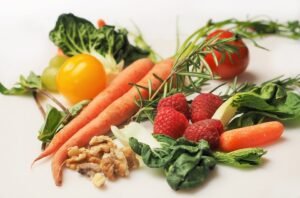Weaning children – a child-led approach
Baby-led weaning (sometimes referred to as baby-led weaning) has become a popular technique for weaning babies off solid food.
In basic terms, this means forgetting pureed food and letting your baby feed himself (conveniently) whole foods. Arguably the most natural way to introduce solids. Although it is still a recommendation from many child care professionals and organizations, there is actually no research to support the prevailing notion that babies should first be weaned to eat solid foods through pureed or pureed food.
Arguably, the idea that pureed solids should be introduced is a relic from the 1960s, when the recommended age for introducing solids was 3 months. These days, the recommended age for introducing solid foods is 6 months. By 6 months, most babies have strong necks, can sit up if supported and have enough fine motor skills to reach and grab objects, including finger food.
They can also start feeding themselves.
Weaning baby led
To begin baby-led weaning, offer your baby a selection of appropriate finger food. Since babies haven’t developed a pincer grip yet and can only grip things with their fists, wafer-shaped foods or those with a handle (such as broccoli sticks) are ideal. Leave it to your child to decide what to do with his food – if all he wants at first is to play with it, that’s fine. He may move on to sucking on his food and later “chewing” it by mashing it with his gums.
Make sure your child is allowed to pick up his food and not put food in his mouth for it. This is because his ability to manage his food is proportional to his general development. When he’s first introduced to solids, he won’t have the fine motor skills to pick up small foods that might be a choking hazard.
Don’t worry about him getting enough to eat or eating a balanced diet of solid foods. He will still get all the required nutrients and “balance” from breastfeeding – the masterpieces of breastfeeding! However, you should try to offer a variety of solid foods to keep up his interest.
Benefits of baby-led weaning
According to Jill Rapley, Deputy Program Director of UNICEF UK’s Child Friendly Initiative, weaning children using a child-led approach has the following advantages:
- Children can participate in family meals from the very beginning, learning valuable social skills
- Children are less likely to refuse foods and to be picky eaters
- It avoids common childhood feeding problems, which are often caused by babies getting confused and needing to chew “phase two” food that contains lumps.
Won’t my baby choke?
It is very important that self-fed babies sit upright and are never left unattended. But until a child can chew, he cannot move food to the back of his mouth. And until she can chew, she won’t be able to pick up food to put in her mouth. The way your baby naturally grows makes the risk of choking minimal. If a piece of food moves to the back of her mouth, she will immediately clean it herself up by gagging and coughing. While the reflex may seem uncomfortable, it doesn’t seem to bother babies at all.
Is baby lead weaning for everyone?
Weaning the baby may not be appropriate if:
- You have a family history of allergies or digestive problems
- Your baby was born prematurely
- Your baby has special needs and has impairments in chewing or other fine motor skills
In these cases, you should consult your pediatrician or your doctor before starting.














Post Comment